Botox injections have become a popular way to reduce wrinkles and treat some medical issues. These shots use a toxin to stop muscles from moving for a short time.
Botulinum toxin injections can smooth facial lines, ease neck spasms, and even help with migraines.
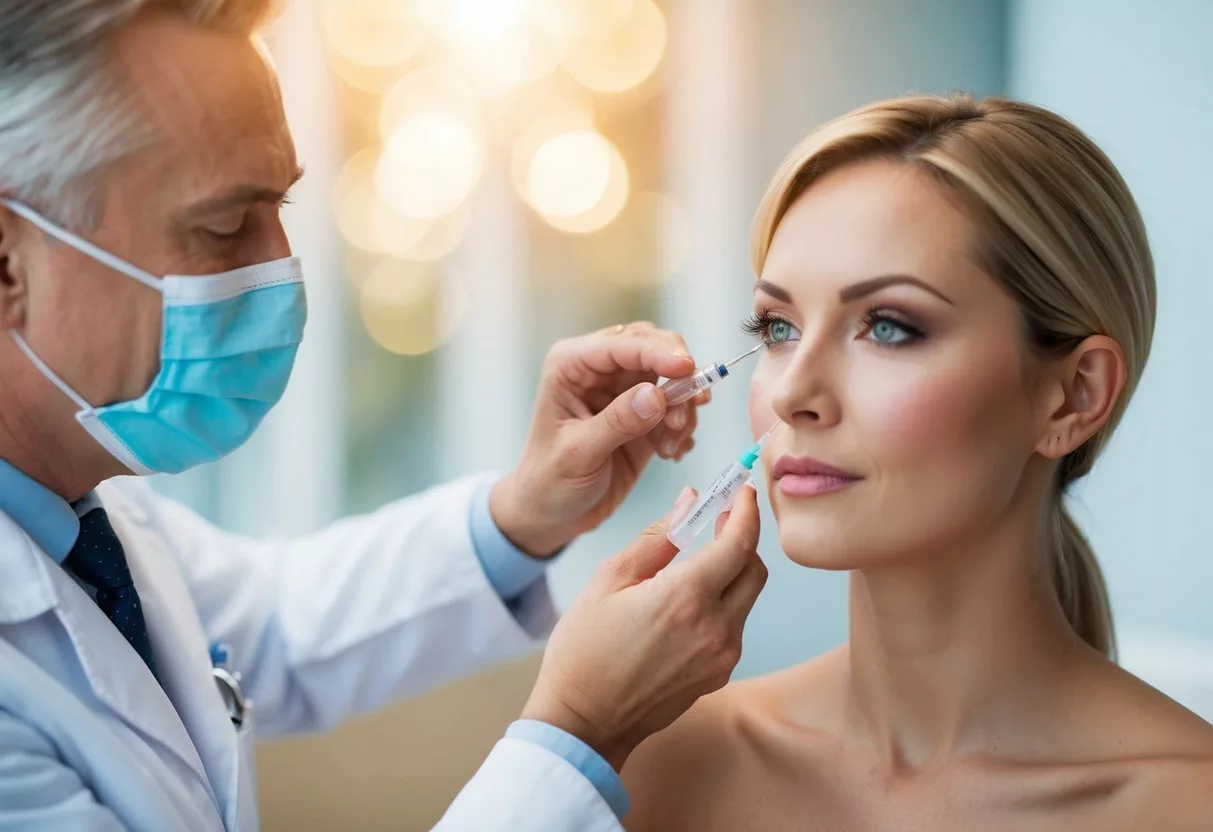
The neurotoxin in Botox works by blocking nerve signals to muscles. This makes the muscles relax, which can soften wrinkles or stop muscle spasms.
Doctors inject small amounts of the toxin into specific areas. The effects last for several months before wearing off.
While many people think of Botox for looks, it has many medical uses too. It can treat lazy eye, stop excessive sweating, and help with overactive bladder. Botox is just one brand name for this type of injection. There are other types of botulinum toxin shots that work in similar ways.
Botox Injections and Its Uses
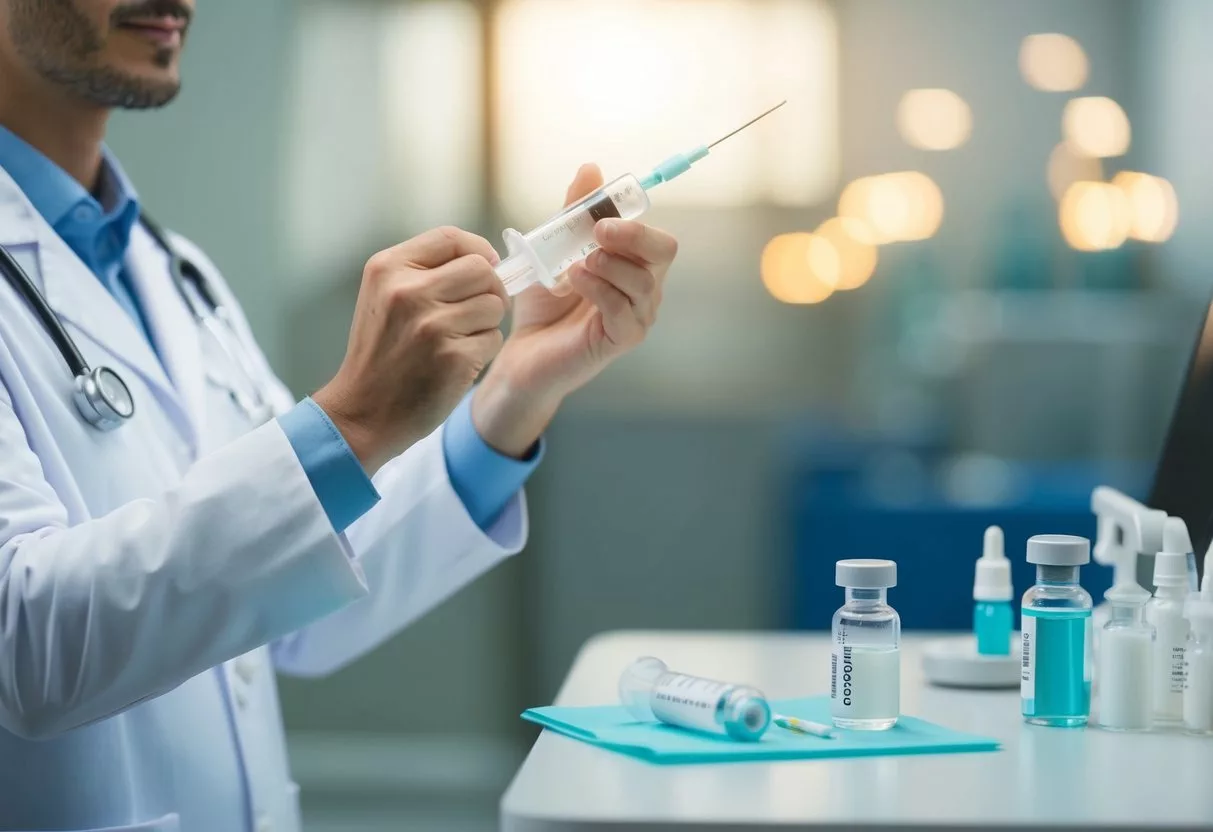
Botox injections are a popular cosmetic and medical treatment. They work by relaxing muscles and smoothing wrinkles. Botox also has several medical uses beyond cosmetic purposes.
Types of Botulinum Toxin Products
There are several botulinum toxin products available:
- Botox: The most well-known brand
- Dysport: Similar to Botox, but spreads more
- Xeomin: A “naked” form without added proteins
- Daxxify: A newer, longer-lasting option
- Jeuveau: Marketed as “Newtox”
Each product has slightly different properties. Doctors choose the best option based on the patient’s needs and the treatment area.
Common Treatment Areas
Botulinum toxin injections treat various concerns:
- Facial wrinkles:
- Frown lines between eyebrows
- Forehead lines
- Crow’s feet around eyes
- Medical conditions:
- Excessive sweating (hyperhidrosis)
- Chronic migraines
- Urinary incontinence
Treatments typically last 3-6 months. Results vary based on the product used and individual factors.
The Science Behind Botox

Botox is a powerful medication that affects muscles and nerves. It comes from a toxin but is used safely in small doses for medical and cosmetic purposes.
How Botox Works on Muscles
Botox injections work by stopping nerve signals to muscles. This makes the muscles relax and not move.
When injected, Botox blocks a chemical called acetylcholine. This chemical usually tells muscles to contract. Without it, muscles stay still.
The effects of Botox are not permanent. Over time, nerves make new connections to muscles. This is why Botox treatments need to be repeated every few months.
Botox can help with muscle spasms in some medical conditions. It relaxes overactive muscles that cause issues like eye twitches or neck spasms.
Botox as a Neurotoxin
Botox comes from a bacteria called Clostridium botulinum. This bacteria makes a toxin that affects nerves.
In large amounts, this toxin is very dangerous. But in tiny, controlled doses it’s safe for medical use.
Botulinum toxin works by blocking nerve signals. It stops nerves from releasing certain chemicals. This is how it affects muscles and other body functions.
Doctors use different types of botulinum toxin. Type A is most common for cosmetic use. Other types might be used for different medical conditions.
The effects of Botox are local. It only affects the area where it’s injected. It doesn’t spread through the whole body.
The Procedure of Botox Injections
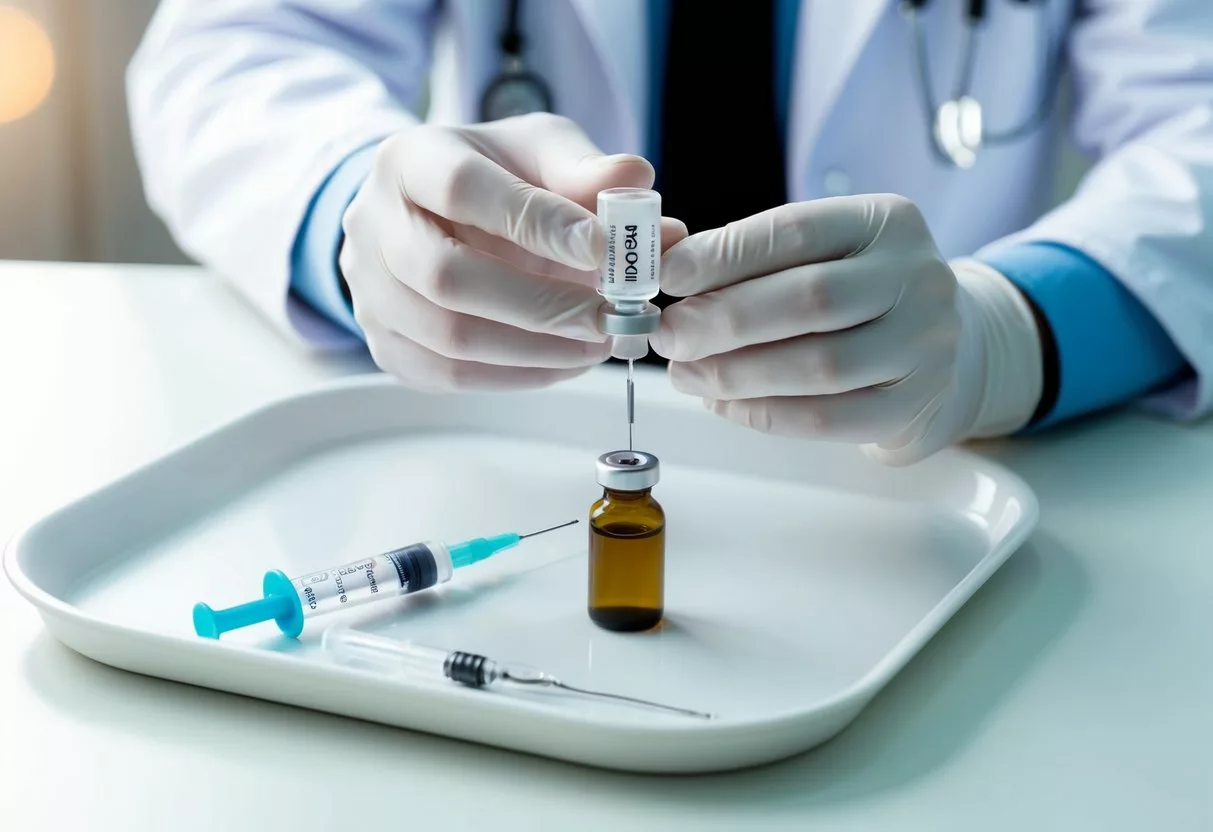
Botox injections are a quick and simple process. The steps involve preparation, the actual injection, and proper aftercare. A skilled provider performs the procedure in a medical setting.
Before the Injection
The doctor will talk with you about your goals. They’ll check your face and pick the best spots for injections.
You might need to stop some medicines before treatment. Clean your face well on the day of treatment. Don’t wear makeup. Tell your doctor about any health issues or allergies. They may take photos to track your progress.
Your doctor will explain what to expect and answer questions. They’ll also go over possible side effects. You’ll sign a consent form if you choose to go ahead.
During the Injection
The actual injection is fast. It often takes less than 15 minutes.
Your doctor will clean the area first. They might use ice or a special cream to numb your skin.
The doctor will use a thin needle to inject small amounts of Botox. They’ll target specific muscles in your face. You may feel a slight pinch with each injection.
The number of injections depends on your needs. Most people get several in each area. Your doctor will be careful to use the right amount.
Aftercare and Recovery
Right after the injections, you can go back to normal activities. But there are some things to avoid.
Don’t rub the treated areas for a day. Skip heavy exercise for 24 hours.
You might see small bumps or redness where you got the shots. This usually goes away fast. Some people get a headache, but it’s not common.
Full results take a few days to show up. You’ll see the most change after about two weeks. The effects of Botox last 3-6 months for most people. You’ll need to get more injections to keep the results.
Safety and Efficacy
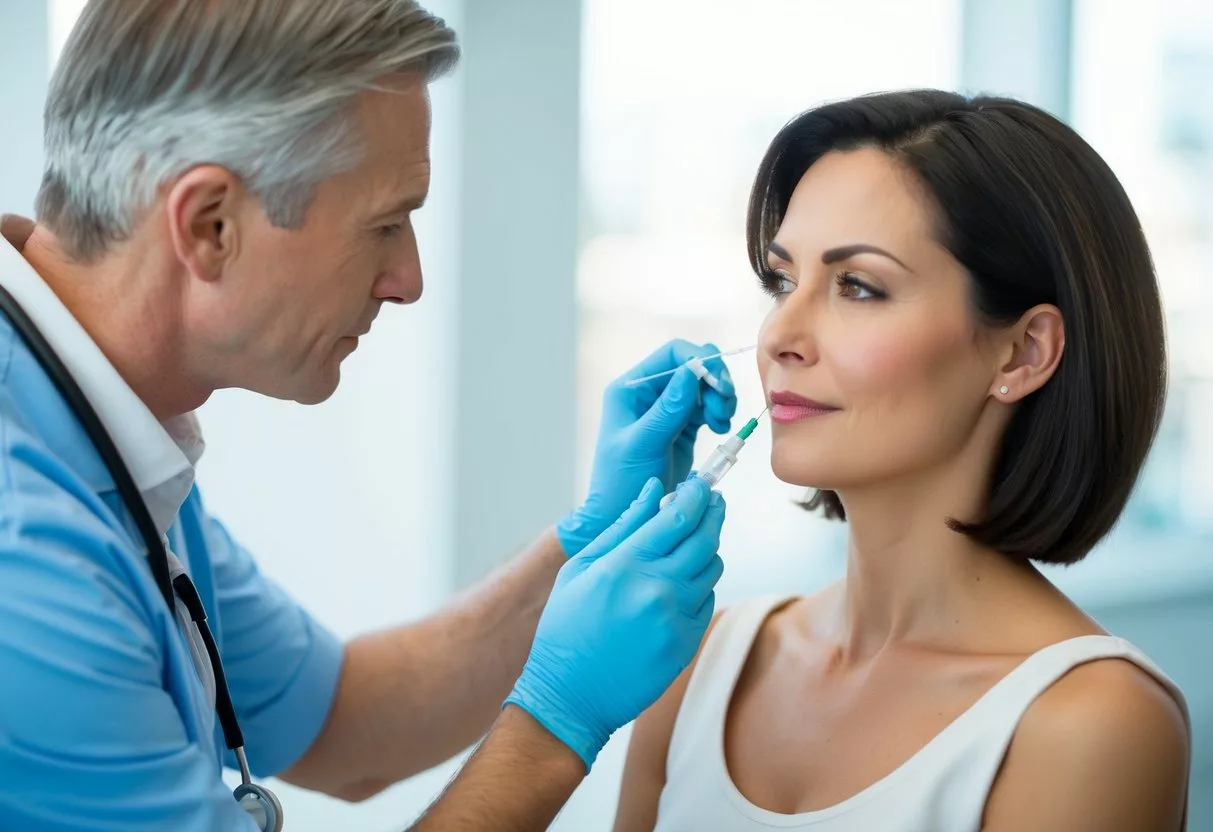
Botox injections have been extensively studied and tested. They have shown good results when used properly by trained doctors.
Clinical Trials and Approvals
Botox is a prescription medicine that has gone through many clinical trials. The FDA first approved it in 1989 for eye muscle problems. Since then, it has been approved for other uses.
These include treating wrinkles, muscle spasms, and migraines. Each new use required its own set of trials to prove it worked and was safe.
Trials tested different doses to find the right amount. They also looked at how long the effects lasted and if there were any side effects.
Long-Term Safety Records
Botox has a good safety record over many years of use. When given by a licensed doctor, it is generally safe.
Side effects are usually mild and short-lived. They can include bruising or pain at the injection site. Serious problems are rare but can happen.
Long-term studies have not found major issues with repeated use. Some people have used Botox for decades without problems.
Doctors keep track of any side effects. This helps make sure Botox stays safe over time.
Potential Side Effects and Complications

Botox injections can cause both mild and serious issues. While most side effects are temporary, some rare complications may be long-lasting or severe.
Common Side Effects
Pain, swelling, or bruising at the injection site are frequent after Botox treatment. These usually go away in a few days.
Some people get headaches or flu-like symptoms after their injections.
Muscle weakness near the treated area can happen. This may cause droopy eyelids or an uneven smile. These effects typically last a few weeks as the Botox wears off.
Some patients report feeling tired after treatment. Others may have trouble swallowing, especially if Botox is used to treat neck muscle problems.
Serious Complications
While rare, allergic reactions to Botox can occur. Signs include itching, rash, and trouble breathing. Anyone experiencing these symptoms should seek medical help right away.
In some cases, the toxin can spread beyond the injection site. This can cause widespread muscle weakness, vision problems, or trouble speaking. These issues are very uncommon but can be serious.
Long-term Botox use may lead to muscle wasting in the treated areas. This happens because the muscles aren’t used as much over time.
Special Considerations and Contraindications

Botox injections require careful evaluation of a patient’s health status and medication regimen. Certain medical conditions and drugs can affect treatment safety and outcomes.
Pre-Existing Conditions
Botulinum toxin injections may not be suitable for everyone. People with neuromuscular disorders like myasthenia gravis or amyotrophic lateral sclerosis (ALS) face higher risks. These conditions can make muscles extra sensitive to the effects of Botox.
Patients with a history of botulism should avoid Botox. The treatment could worsen their symptoms.
Active infections at injection sites are a no-go. They raise the chance of complications. Doctors must check the skin carefully before treatment.
Medication Interactions
Some medicines don’t mix well with Botox.
Antibiotics like aminoglycosides can boost its effects. This may lead to excessive muscle weakness.
Blood thinners increase bruising risk. Patients may need to stop these drugs before treatment.
Other drugs that can interact with Botox include:
- Muscle relaxants
- Some allergy medicines
- Certain sleep aids
Patients should give their doctor a full list of medications. This helps prevent unwanted effects.
Alternative Treatments to Botox

People looking for smoother skin have options beyond Botox. These include both surgical and non-surgical choices. Each has its own benefits and drawbacks.
Surgical Options
Facelifts are a long-lasting option for those seeking dramatic results. This procedure lifts and tightens facial tissues. It can reduce sagging and wrinkles.
Brow lifts target the forehead area. They raise drooping eyebrows and smooth forehead lines. Recovery time is needed for both procedures.
Eyelid surgery, or blepharoplasty, removes excess skin around the eyes. It can help with crow’s feet and under-eye bags. Results can last for many years.
Non-Surgical Alternatives
Injectable fillers are popular Botox alternatives. They add volume to smooth out wrinkles.
Hyaluronic acid fillers are common and give quick results.
Chemical peels remove the top layer of skin to reveal fresher skin beneath. They can improve fine lines and skin texture.
Peels come in different strengths.
Laser treatments stimulate collagen production. They can tighten skin and reduce wrinkles.
Fractional CO2 lasers are very effective for this purpose.
Neurotoxins similar to Botox exist. These include abobotulinumtoxina, incobotulinumtoxina, and prabotulinumtoxina. They work in similar ways to Botox but may have slightly different effects.
Topical creams with retinoids can improve skin over time. They boost collagen and cell turnover.
Prescription-strength formulas are most effective.
Choosing the Right Healthcare Provider
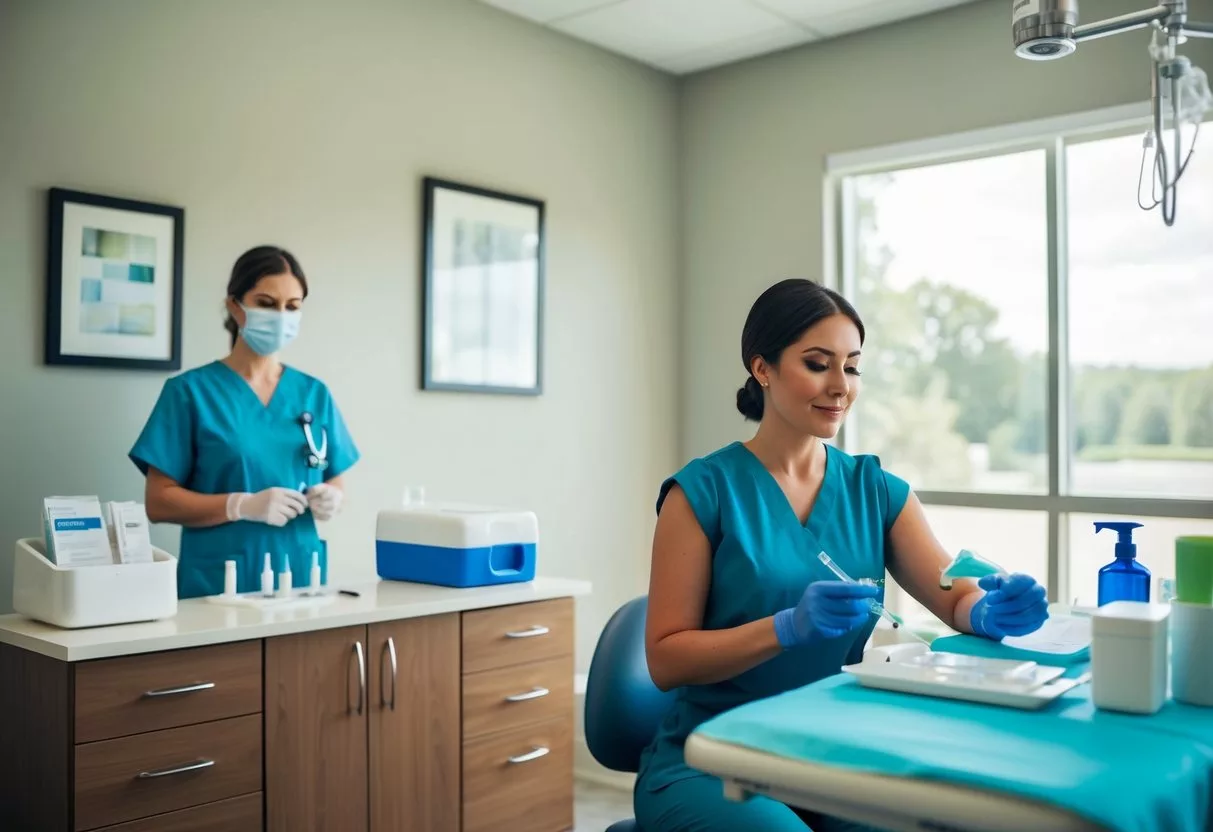
Selecting a qualified provider for Botox injections is crucial for safe and effective treatment.
A skilled practitioner can help achieve natural-looking results while minimizing risks.
What to Look for in a Provider
Look for a licensed healthcare provider with specific training in Botox injections.
Dermatologists, plastic surgeons, and some nurses often have this expertise.
Check the provider’s credentials and experience. Ask how many Botox procedures they’ve done and request before-and-after photos of their work.
A reputable medical office should have a clean, professional environment. They should use only FDA-approved Botox products and follow proper safety protocols.
Read patient reviews and ask for referrals from trusted sources. A good provider will have a track record of satisfied clients and positive outcomes.
The Importance of a Thorough Consultation
A quality provider will offer a comprehensive consultation before treatment.
They should assess your medical history and discuss your goals.
The healthcare provider should explain the procedure, potential risks, and expected results. They’ll examine your face and recommend the best treatment areas.
A thorough consultation allows you to ask questions and voice concerns.
The provider should listen carefully and address all your queries.
Be wary of practitioners who rush through consultations or pressure you into treatment. A good provider prioritizes patient education and comfort.
Real Patient Experiences

Botox injections have helped many people achieve their aesthetic goals.
Patients report diverse outcomes and share their personal journeys with this popular treatment.
Success Stories
Botox treatments have yielded positive results for numerous individuals.
Many patients express satisfaction with smoother skin and reduced wrinkles. Some notice improved confidence in social and professional settings.
One patient described her experience as “absolutely the best.” She praised her doctor’s attention to detail and thorough explanations.
This level of care helped her feel at ease during the procedure.
Another patient reported visible improvements within a week of treatment. He was pleased with the natural-looking results that enhanced his appearance without appearing overdone.
Candid Testimonials
Not all Botox experiences are the same. Some patients share mixed feelings about their treatments.
A few report mild side effects like temporary bruising or slight discomfort during injections.
One patient noted that while she liked the results, she felt the effects wore off faster than expected. This led her to adjust her treatment schedule for better long-term outcomes.
Another individual mentioned initial hesitation due to societal views but ultimately found the treatment boosted his self-assurance.
He emphasized the importance of choosing a qualified injector for optimal results.
Some patients use Botox for pain relief rather than cosmetic reasons. These individuals often report improved quality of life and reduced discomfort from conditions like chronic migraines.
Future and Advancements in Botox Treatments
Botox treatments are evolving rapidly with new research and formulations on the horizon. These advancements aim to enhance effectiveness, safety, and personalization of treatments using botulinum toxin.
Upcoming Research
Scientists are exploring new uses for Botox beyond cosmetic applications.
Studies are looking at its potential to treat conditions like depression, anxiety, and chronic pain. Researchers are also investigating ways to make Botox last longer and work faster.
One exciting area is the development of “smart” Botox that can be activated or deactivated on demand. This could give patients more control over their treatment effects.
Another focus is improving injection techniques.
Advanced imaging technologies may help doctors target specific muscles more precisely, leading to better results and fewer side effects.
Innovative Botox Formulations
New types of botulinum toxin are being developed to expand treatment options.
Daxibotulinumtoxina, a longer-lasting form of Botox, is showing promise in clinical trials. It may provide results that last up to six months, compared to the typical three to four months of current formulations.
Researchers are also working on needle-free delivery methods.
These include topical creams and gels containing botulinum toxin that can be applied to the skin without injections. This could make treatments more comfortable and accessible.
Combination therapies are gaining traction too.
Scientists are exploring how to pair Botox with other substances like hyaluronic acid fillers for enhanced results. These innovative approaches aim to provide more natural-looking and longer-lasting effects.
Frequently Asked Questions
Botox injections are a popular cosmetic treatment with several medical uses. Many people have questions about costs, effects, risks, and benefits before getting Botox.
How much do Botox treatments typically cost?
The cost of Botox treatments varies.
Prices usually range from $200 to $800 per treatment area. Factors affecting cost include the provider’s experience, geographic location, and amount of Botox used.
Botox for medical conditions may be covered by insurance. Cosmetic Botox is generally not covered and paid out-of-pocket.
What are the common side effects associated with Botox injections?
Common side effects of Botox are usually mild and temporary.
They can include bruising, swelling, or redness at the injection site.
Some people experience headaches or flu-like symptoms after treatment. These effects typically resolve within a few days.
What are the approved uses for Botox?
Botox has both cosmetic and medical uses.
For cosmetics, it’s approved to reduce facial wrinkles like frown lines and crow’s feet.
Medical uses include treating neck spasms, excessive sweating, overactive bladder, and lazy eye. Botox can also help prevent migraines in some patients.
How long does the effect of a Botox treatment last?
The effects of Botox typically last 3 to 6 months.
Results can vary based on the individual and the treated area.
Some people may see results lasting up to 6 months. Others might need touch-ups sooner. Regular treatments can sometimes lead to longer-lasting effects.
Are there any serious risks associated with Botox treatments?
Serious risks from Botox are rare when administered by a qualified professional. However, potential complications can occur.
These may include difficulty swallowing or breathing, muscle weakness, or vision problems.
It’s crucial to choose a licensed and experienced provider to minimize risks.
Can Botox treatments have a preventative effect on wrinkles?
Botox can help prevent the formation of new wrinkles. It works by relaxing muscles that cause wrinkles over time.
Starting Botox treatments early may slow the development of fine lines. However, it’s not a permanent solution. Ongoing treatments are needed for continued effects.